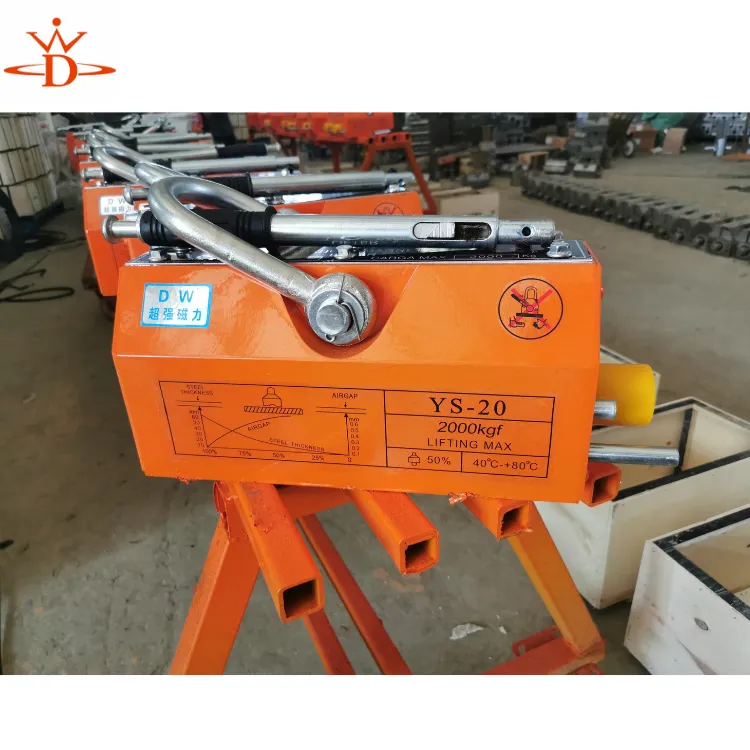200 kg Magnetic Lifter for Efficient Heavy Lifting Solutions and Industrial Applications
Exploring the Magnetic Lifter A Game Changer for Heavy Lifting
In modern industrial settings, efficiency and safety are paramount. One innovative solution that has gained traction in recent years is the magnetic lifter, specifically designed to handle heavyweight materials. Among these, models capable of lifting up to 200 kg have proven particularly useful for various applications such as manufacturing, warehousing, and construction.
What is a Magnetic Lifter?
A magnetic lifter utilizes powerful permanent magnets to lift and transport ferromagnetic materials. These lifters come in various sizes and lifting capacities, with 200 kg models being a popular choice due to their versatility. Unlike traditional lifting devices that rely on hooks, slings, or chains, magnetic lifters offer a seamless solution that requires minimal setup and eliminates the complexities associated with other lifting methods.
How Does It Work?
The operation of a magnetic lifter is straightforward yet highly efficient. When activated, powerful magnets create a strong magnetic field that securely adheres to the surface of ferrous metals, such as steel plates, pipes, and sheets. The user simply places the lifter on the desired metal object, activates it, and the lifter attaches firmly, allowing the object to be lifted with ease. Deactivating the magnet releases the object seamlessly without the risk of drops or slips.
Advantages of Using a Magnetic Lifter
1. Safety One of the primary benefits of using a magnetic lifter is enhanced safety. The likelihood of accidents during the lifting process decreases significantly since the magnets provide a secure grip on the load. This is especially important in industries where heavy materials are frequently moved.
2. Efficiency Magnetic lifters significantly reduce the time and effort required for lifting operations. Unlike traditional methods that may require several workers to maneuver objects, magnetic lifters can be operated by a single person, thus streamlining processes and reducing labor costs.
3. No Power Source Required Unlike electric hoists or other powered lifting equipment, magnetic lifters do not require a power source. This feature makes them portable and suitable for various work environments, including outdoor sites where electricity may not be readily available.
magnetic lifter 200 kg

4. Minimal Wear and Tear Magnetic lifters are designed to be durable. They typically require minimal maintenance and have a long lifespan, making them a cost-efficient choice in the long run.
Applications of Magnetic Lifters in Various Industries
Magnetic lifters, especially those rated for 200 kg, find applications across multiple sectors
- Manufacturing In factories, magnetic lifters are used to move heavy metal parts during assembly lines or for transporting materials to various processing stations.
- Warehousing They facilitate the efficient stacking and retrieving of heavy metal goods, enhancing the operational capacity of warehouses and storage facilities.
- Construction Magnetic lifters are also widely used on construction sites to handle steel beams, iron rods, and other heavy materials that need to be positioned accurately.
- Metal Fabrication In metalworking shops, these lifters aid in the manipulation of raw materials, facilitating tasks such as cutting, welding, and bending.
Conclusion
The magnetic lifter with a lifting capacity of 200 kg is undoubtedly a revolutionary tool in the realm of heavy material handling. Its amalgamation of safety, efficiency, and ease of use makes it an invaluable asset in various industries. As businesses continue to seek ways to enhance productivity while ensuring employee safety, the adoption of magnetic lifters is set to rise. Whether in manufacturing, warehousing, construction, or metal fabrication, a magnetic lifter can significantly improve lifting operations, proving that sometimes the simplest solutions are the most effective.
-
Unlock Seamless Relocation with Our Heavy Equipment Moving ExpertiseNewsJun.06,2025
-
Unleash Unrivaled Flexibility with Our Adjustable Gantry CraneNewsJun.06,2025
-
Unleash Heavy-Duty Efficiency with Our Industrial Gantry Crane SolutionsNewsJun.06,2025
-
Revolutionize Steel Handling with Our Magnetic Lifter RangeNewsJun.06,2025
-
Master Equipment Mobility with Premium Machinery Mover SolutionsNewsJun.06,2025
-
Elevate Your Material Handling with Magnetic Lifter TechnologyNewsJun.06,2025
-
YS Permanent Lifting Magnets: The Smarter Way to Handle SteelNewsMay.22,2025
